
Untersuchungen von UNICOIL haben ergeben, dass einige der in Saudi-Arabien und den Golfstaaten verwendeten Lacke für Produkte aus vorlackiertem, verzinktem Stahl einen hohen Anteil an Blei aufweisen. Selbiges gilt für das Zink, das bei der Verzinkung von Stahlprodukten zum Einsatz kommt. Studien haben gezeigt, dass 0,6 % aller Erkrankungen weltweit auf Bleivergiftungen zurückzuführen sind und dass dieses Problem hauptsächlich in Entwicklungs- und Schwellenländern auftritt. Blei wird für jährlich 600.000 neue Fälle von geistigen Behinderungen bei Kindern verantwortlich gemacht. Die Senkung des Bleianteils in Kraftstoffen, Lacken, Rohren und Lot während der letzten beiden Jahrzehnte hat deutlich zur Senkung der Bleiwerte im Blut beigetragen. Dennoch findet häufig noch eine übermäßige Aussetzung statt, besonders in den Entwicklungsländern. Umfassende Informationen zu Blei sind öffentlich zugänglich. Dieser Abschnitt der Bibliothek fasst die relevante Literatur zu den Grundlagen, zu den Folgen von Bleivergiftungen, zu den Auswirkungen auf die Eigenschaften verzinkter und vorlackierter Produkte aus Stahl, zu Bleitests und zu den relevanten Bestimmungen in unterschiedlichen Ländern zusammen.
- 1Basiswissen zu Blei als ElementBlei ist ein weiches, gut formbares und leitendes Element. Es weist eine bläulich-weiße Färbung auf und ist hell glänzend. Es ist besonders korrosionsbeständig und wird häufig mit Antimon als Härter legiert. Blei ist ein beim Einatmen oder Verschlucken hochgiftiges Metall. Die langfristige Aussetzung ist gesundheitsschädlich. Blei kommt in elementarer Form quasi nicht in der Natur vor. In der Regel findet man es in Form von Bleiglanz (PbS), aus dem durch Rösten Blei gewonnen wird. Anglesit, Zerussit und Mennige sind weitere Vorkommen.
Verwandte Studien

Facts About Lead
LiveScience
www.livescience.com Lead is a soft, very malleable and ductile element. It has a bluish-white coloring and a very bright luster. It is strongly resistant to corrosion and is sometimes alloyed with antimony to harden … read more

Effects of Lead on Human Health
UNICOIL
www.unicoil.com.sa Lead is a useful and common metal that has been used by humans for thousands of years. It is also a very dangerous poison, particularly for children, when it is accidentally inhaled or ingested. The main target for the lead toxicity is the nervous system … read more - 2Bleibergwerke weltweitBleiglanz oder Bleisulfid ist das häufigste Bleierz und kommt weltweit vor. Es wird in zahlreichen Ländern abgebaut, u. a. in den USA, in Australien und in China. Bleierz wird unter Tage aus Flözen gesprengt und zur Weiterverarbeitung an die Oberfläche gefördert.
Verwandte Studien
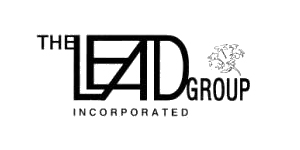
Lead Companies
The Lead Group Incorporated
www.lead.org.au The following links are provided for community watchdog information purposes only, and to assist lead mining companies in carrying out their lead product stewardship responsibilities … read more
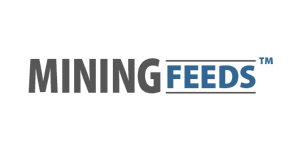
Zinc-Lead Mining Companies Listed in All Countries
MiningFeeds
www.miningfeeds.com Below are the list of Zinc-Lead Mining Companies all countries around the world… read more
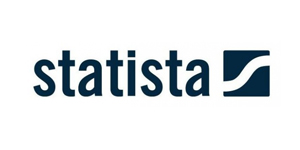
Major countries in lead mine production worldwide from 2010 to 2014 (in 1,000 metric tons)
Statista
www.statista.com This statistic provides a country-by-country breakdown of lead mine production from 2010 to 2014. In 2013, Sweden’s mines produced approximately 62,000 metric tons of lead. Thus, Sweden was among the top 10 lead mine producers worldwide… read more
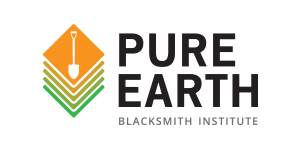
Lead Smelting
WorstPolluted
www.worstpolluted.org Lead processing and smelting plants work with both primary and secondary lead. Primary lead is mined, separated from ore, and refined into various products, whereas secondary lead is recovered from used objects – such as used lead-acid batteries – for reuse in other products… read more - 3BleiverarbeitungAm Anfang der Primärbleigewinnung steht die Sinterung. Gemahlenes Bleierz wird mit Eisen, Siliziumdioxid, Kalkflussmittel, Koks, Soda, Asche, Pyrit, Zink, Ätzmittel oder emissionshemmenden Mitteln in eine Sinteranlage gegeben. Mit heißer Druckluft wird der Schwefel aus dem Gemisch ausgebrannt, das anschließend in die Schmelze eingebracht wird. Blei wird üblicherweise in Hochöfen geschmolzen, wobei die Kohle aus der Sinteranlage verfeuert wird. Während des Schmelzvorgangs bilden sich mehrere Schichten im Ofen. Das geschmolzene Blei sammelt sich dabei unten im Ofen. Die leichtesten Elemente (darunter Arsen und Antimon) schwimmen oben. Diese Schicht wird als „Speise“ bezeichnet. Kupfer- und andere Metallsulfide bilden den so genannten „Rohstein“. Bei der letzten Schicht handelt es sich um die Hochofenschlacke, die hauptsächlich aus Silikaten besteht. Speise und Rohstein gehen meist in die Kupfergewinnung. Die Schlacke wird deponiert und teilweise (bei ausreichendem Metallgehalt) recycelt.
Verwandte Studien

6 Lead Processing
Illinois Sustainable Technology Center
www.wmrc.uiuc.edu The US is the third largest producer of primary lead, with most coming from Missouri. The primary end users of lead are batteries and ammunition. Consumers of lead include TV glass, computer glass, construction (including radiation shields), and protective coatings… read more - 4Nutzung von BleiDer Hauptanwendungsbereiche von Blei und Bleioxid (PbO) sind die Fertigung von Fahrzeugbatterien, Walzprodukten, Pigmenten, Kabelummantelungen, Geschossen und Bleilegierungen. Bleilegierungen finden in der Industrie weitreichende Verwendung.
Verwandte Studien
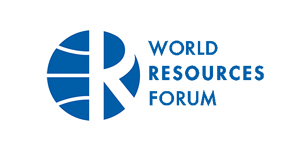
Applications and Use
World Resources Forum
www.wrforum.org Lead is a very soft, highly malleable, low-melting and ductile base metal that is very resistant to corrosion but tarnishes upon exposure to air Lead Uses, International Lead Association. The primary application of lead is in batteries; currently, the battery industry consumes approximately 71% of the world’s lead …. read more
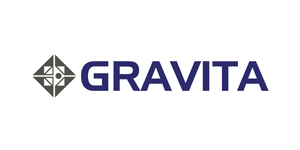
Used of Lead
Gravita Engineering & Technologies
www.gravitatechnomech.com There are many different uses of Lead. It may be used as a pure metal, alloyed with other metals, or as chemical compounds… read more - 5Geschichte der BleivergiftungBleivergiftung ist eine umweltbedingte Erkrankung, jedoch auch abhängig von den Lebensgewohnheiten. Bei Blei handelt es sich um eine der bestuntersuchten giftigen Substanzen, daher ist mehr über die negativen Auswirkungen von Blei bekannt als über die jeder anderen chemischen Substanz. Durch Blei verursachte gesundheitliche Probleme unter unterschiedlichen Voraussetzungen wurden auf allen Kontinenten umfassend dokumentiert. Technologische Fortschritte haben es ermöglicht, die Auswirkungen einer Exposition gegenüber Blei auch in geringen Mengen bis an die Erfassungsgrenze zu untersuchen. Wir wissen, wie es in den Körper gelangt und welche Schäden es dort anrichtet. Am wichtigsten ist jedoch, dass wir wissen, wie sich dies verhindern lässt. Mithilfe moderner Technologie können wir die Ausbreitung von Blei in der Umwelt verfolgen und die damit verbundenen gesundheitlichen Folgen ermitteln.
Verwandte Studien

History of Lead Poisoning in the World
The LEAD Group Incorporated
www.lead.org.au Lead poisoning is an environmental disease, but it is also a disease of life style. Lead is one of the best-studied toxic substances, and as a result we know more about the adverse health effects of lead than virtually any other chemical. The health problems caused by lead have been well documented over a wide range of exposures on every continent…. read more
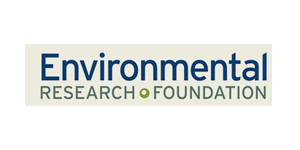
Lead Poisoning in a Historical Perspective
Environmental Research Foundation
www.rachel.org Lead has been mined and used by mankind for 6,000 years, and the history of lead poisoning is nearly 2,500 years old. Summarizing such a long story in a few pages in a balanced way is impossible….. read more
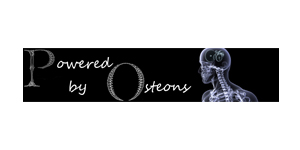
Lead Poisoning in Rome – The Skeletal Evidence
Powered by Osteons
www.poweredbyosteons.org A friend alerted me to an IO9 post, „The First Artificial Sweetener Poisoned Lots of Romans.“ It’s a (very) brief look at some of the uses of lead (Pb) in the Roman world, including the hoary hypothesis that rampant lead poisoning led to the downfall of Rome – you know, along with gonorrhea, Christianity, slavery, and the kitchen sink… read more
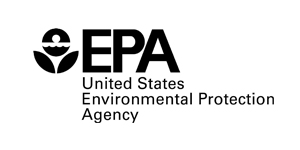
Lead Poisoning: A Historical Perspective
United States Environmental Protection Agency
www2.epa.gov The decades-old controversy over the use of lead as a fuel additive is a mere footnote to centuries of controversy over this remarkably useful but also insidiously deadly metal… read more - 6Folgen einer BleivergiftungBlei ist eines der tödlichsten Metalle, da es sich im Lauf der Zeit im Körper anreichert und zahlreiche gesundheitliche Probleme verursacht. Sport und Schwitzen ermöglichen eine Ausscheidung von Schwermetallen wie Blei. Beachten Sie, dass Blei nicht über das Verdauungssystem ausgeschieden werden kann. Die Organe nehmen Blei direkt aus dem Blut auf, das sich dann zusammen mit anderen Materialien auch in den Knochen ablagert. Nierenversagen, Schwangerschaft und Menopause können verursachen, dass das Blei aus den Knochen erneut ins Blut gelangt.
Verwandte Studien

Lead Poisoning
Seattle Organic Restaurants
www.seattleorganicrestaurants.com Lead is one of deadliest metals that over a period of time can accumulate in the body and cause many health problems. Exercising and perspiration can detoxify the body from accumulation of heavy metals like lead… read more
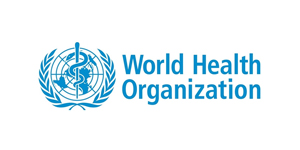
Childhood Lead Poisoning
World Health Organization
www.who.int Lead poisoning has been a scourge to human health for millennia.Childhood lead poisoning has been a recognized clinical entity since the first decade of the 20th century. Lead has had devastating consequences for the health of the world’s children…. read more

Lead
World Health Organization
www.who.int Lead is a toxic metal whose widespread use has caused extensive environmental contamination and health problems in many parts of the world. It is a cumulative toxicant that affects multiple body systems, including the neurologic, hematologic, gastrointestinal, cardiovascular, and renal systems. Children are particularly vulnerable to the neurotoxic effects of lead, and even relatively low levels of exposure can cause serious and in some cases irreversible neurological damage. read more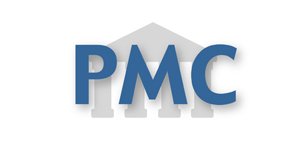
Time to Ban Lead in Industrial Paints and Coatings
National Center for Biotechnology Information, U.S. National Library of Medicine
www.ncbi.nlm.nih.gov In the U.S. and most high-income countries, regulations already restrict the use of lead paint for residential applications. However, few countries have enacted comprehensive bans on the use of lead additives in all paints… read more - 7Internationale Organisationen mit dem Schwerpunkt BleivergiftungIm Folgenden finden Sie einige der wichtigsten internationalen Organisationen, die sich schwerpunktmäßig mit Bleivergiftungen befassen:



Verwandte Studien

Lead
World Health Organization
www.who.int Lead is a toxic metal whose widespread use has caused extensive environmental contamination and health problems in many parts of the world. It is a cumulative toxicant that affects multiple body systems, including the neurologic, hematologic, gastrointestinal, cardiovascular, and renal systems… read more

ISEE Call for Action for Global Control of Lead Exposure to Eliminate Lead Poisoning
International Society for Environmental Epidemiology
www.iseepi.org Lead is a toxic metal whose widespread use has caused extensive environmental contamination and health problems in many parts of the world. It is a cumulative toxicant that affects multiple body systems, including the neurologic, hematologic, gastrointestinal, cardiovascular, and renal systems… read more

Lead Outreach, Partnerships and Grants
United States Environmental Protection Agency
www2.epa.gov In 2010, EPA launched an extensive outreach campaign to inform the tens of thousands of contractors, workers and families about the RRP rule. Outreach materials were sent to contractors, media, large and small hardware stores, trade associations, and others, and included ads, web materials, articles, postcards, brochures, and fact sheets… read more - 8Gesetzliche Bestimmungen zu Blei in unterschiedlichen LändernBei der Betrachtung der rechtlichen Lage in unterschiedlichen Ländern wie den USA, Australien und Indien zeigt sich, dass diese den Bleianteil in Lacken unterschiedlich regeln. Außerdem wird in der Betrachtung deutlich, dass die Regulierung durch den Lead Based Poisoning and Prevention Act („Title X“) in den USA als weltweit vorbildlich gilt.
Verwandte Studien

Lead Legislation: The World’s Best and Worst Practice Regulating Lead in Paint
The LEAD Group Incorporated
www.lead.org.au Since its discovery in 6500 BC, lead has been used for various purposes, most notably as an additive in paint. Since 200 BC, there has been an acknowledgement of its detrimental health impacts, including diminished mental health, physical defects, behavior problems, as well as infant death…. read more
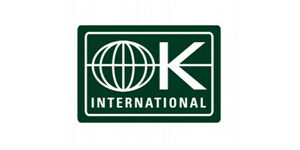
Lead Paint Background
Occupational Knowledge International
www.okinternational.org While developed countries have implemented standards to regulate the use of lead in paint, much of the new paint currently sold in most countries contains high levels of lead. OK International published one of the first studies along with our Indian partners at Toxics Link in 2008 on lead levels in paints in India that triggered the largest companies there to reformulate their residential paint products…. read more

Lead Outreach, Partnerships and Grants
Authenticated U.S. Goverment Information
www.gpo.gov In this part 1303, the Consumer Product Safety Commission declares that paint and similar surface-coating materials for consumer use that contain lead or lead compounds and in which the lead content (calculated as lead metal) is in excess of 0.06 percent (0.06 percent is reduced to 0.009 percent effective August 14, 2009 as mandated by Congress in section 101(f) of the Consumer Product Safety Improvement Act of 2008, Pub. L. 110–314) of… read more - 9Sichere Grenzwerte für Blei in Wasser, Boden, Luft, Blut, Lebensmitteln, Lacken und ZinkAufgrund der gesundheitlichen Gefahren haben zahlreiche Behörden freiwillige Richtwerte veröffentlicht oder gesetzliche Grenzwerte festgelegt, die den Bleianteil in unterschiedlichen Zusammenhängen regeln. Die folgende Tabelle fasst diese Standards und Vorschriften mit dem Stand von 2006 zusammen. Ausführliche Informationen sind den folgenden Abschnitten zu entnehmen.
Verwandte Studien

Lead in Drinking Water
World Health Organization
www.who.int From a drinking-water perspective, the almost universal use of lead compounds in plumbing fittings and as solder in water distribution systems is important. Lead pipes may be used in older distribution systems and plumbing… read more
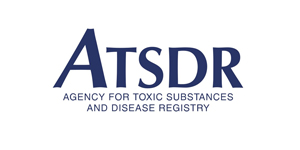
Lead Toxicity: What Are the U.S. Standards for Lead Levels?
Agency for Toxic Substances & Disease Registry
www.atsdr.cdc.gov Because of lead’s importance as a cause of public health problems, a number of federal agencies have issued advisory standards or enforceable regulations that set lead levels in different media. The table below summarizes these standards and regulations for 2006; see subsequent sections for further explanation… read more

Testing Your Home For Lead In Paint and Soil
California Department of Public Health
www.cdph.ca.gov If you have children, lead in your home can cause serious long term health and behavior problems for them. Lead is a hazard to children under 6 years of age in particular. Lead in paint, dust and soil is a problem for children because it gets in their bodies when they put their fingers, toys or paint chips or dust into their mouths. Lead can also harm a pregnant woman and her developing fetus… read more - 10Blei im TrinkwasserBlei findet sich zwar kaum in Quellwasser, kann jedoch über korrodierte Rohre ins Trinkwasser gelangen. Bei vor 1986 gebauten Häusern ist die Wahrscheinlichkeit höher, dass Rohre, Armaturen und Lötmittel Blei enthalten. Auf dieser Seite finden Sie weitere Informationen zu den gesundheitlichen Folgen, den Quellen und der Verbreitung von Blei sowie zu entsprechenden Gegenmaßnahmen.
Verwandte Studien

Lead in Drinking Water
The Science Education Resource Center at Carleton College
www.serc.carleton.edu Lead (Pb) in the environment is a major environmental health hazard. It has had wide use in a wide variety of commercial products ranging from leaded gas to household paint. However, Pb is a toxic substance that affects the development of the nervous system, and extended exposure can lead to neorological dysfunction and even death. … read more

Basic Information about Lead in Drinking Water
United States Environmental Protection Agency
www2.epa.gov The United States Environmental Protection Agency (EPA) regulates lead in drinking water to protect public health. Lead may cause health problems if present in public or private water supplies in amounts greater than the drinking water standard set by EPA… read more
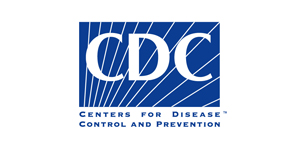
About Lead in Drinking Water
Centers of Disease Control and Prevention
www.cdc.gov For more than 20 years, CDC has championed children’s health by working together with other federal agencies and through effective programs and policies to prevent childhood lead poisoning. Exposure to lead can cause behavior problems and learning disabilities in young children and can also affect the health of adults… read more - 11BleitestsDer Bleianteil in Lacken wird hauptsächlich mithilfe von drei Verfahren bestimmt: 1) Chemischer Bleitest vor Ort 2) Messung des Bleianteils vor Ort mit einem tragbaren Röntgenfluoreszenzspektrometer 3) Entnahme einer Probe zur Durchführung unterschiedlicher Bleitests im Labor
Verwandte Studien

Brief guide to analytical methods for measuring lead in paint
World Health Organization
www.who.int This document provides a brief overview of analytical methods available for measuring lead in paint. It is primarily aimed at informing environmental health personnel and policy-makers who are not laboratory specialists but who may need to develop plans for lead paint testing and abatement programmes … read more - 12Auswirkungen von Blei auf die Eigenschaften von verzinktem StahlBlei verdampft nur bei Temperaturen über 1650 °C und da sich ein Teil des Bleis in Stahl löst, verdampft im Verhältnis weniger Blei als Zink. Bleioxiddämpfe sollten jedoch nicht eingeatmet werden. Empfohlene Maßnahmen zur Verhinderung der Einatmung von Zinkoxid verhindern auch das Einatmen von Bleioxiden. Außerdem bestehen Bedenken gegenüber dem Restbleianteil, wenn Kinder in Kontakt mit Produkten aus verzinktem Stahl kommen, beispielsweise bei Spielgeräten ohne hochwertige Versiegelung. Einige Hersteller setzen bei der Fertigung verzinkter Produkte Zink mit einer Reinheit von 99,99 % ein, bei dem der Bleianteil beim Schweißen und bei Kontakt keine Rolle spielt.
Verwandte Studien
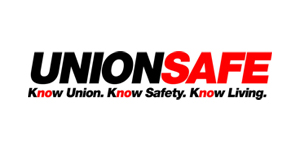
FACT SHEET: Galvanized Steel
UNIONSAFE
www.unionsafe.org.au Galvanizing has been used to protect iron and steel from rusting for over a hundred years in places as diverse as the wire rope used for the suspension cables on Bridges to gutters on houses. Galvanizing is simply coating of zinc over steel… read more - 13Auswirkungen von Blei auf die Eigenschaften von vorlackiertem, verzinktem StahlEs gibt deutliche historische, epidemiologische und analytische Belege dafür, dass es sich bei Blei in Lacken um eine der Hauptursachen für Bleivergiftungen von Kindern in den USA handelt. Die Hauptexposition findet über Blei statt, das aus Lacken in den Hausstaub und den Boden gelangt und von dort über normalen Hand-Mund-Kontakt ins Blut. Eine weitere wichtige Expositionsquelle sind Lacksplitter, die direkt aufgenommen werden. Der derzeitige Forschungsstand legt nahe, dass die Nichtbeseitigung verbleiter Lacke aus Altbauten auch in Zukunft für die Bleiexposition zahlreicher Kinder verantwortlich sein wird.
Verwandte Studien
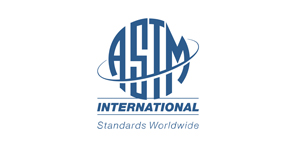
Lead in Paint, Soil and Dust
ASTM International
www.astm.org The manuscripts support the discussions held during the week covering the topics of Health Risks, Exposure Studies, Control Measures, Measurement Methods, Quality Assurance, and Laboratory and Field Measurement Accreditation. The following is a brief summary of each of the presentations made at the conference… read more